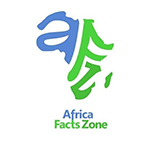Africa is Endowed with over 45,000 Medicinal Plants, Here are 7 that are Popular

Medicinal plants have played a significant role in the creation of several pharmaceuticals. Three examples of plant-derived medications are antimalarial artemisinin, painkiller morphine, and cancer chemotherapeutic taxol. About a quarter of the world’s plant genetic resources are found in Africa’s 45,000 kinds of plant.
Over 5,000 types of plants found in Africa have been employed in traditional remedies. Associate Professor Adeyemi Aremu and Professor Nox Makunga, both experts in medicinal plants, highlight a few of these plants.

Also Read: What is the 7 Wonders of the World
Medicinal plants of the Artemisia genus, symphyotric to Jacq (African wormwood)
One and only one species of Artemisia afra may be found in Africa. As a result of its wide range of functions in African traditional medicine, it’s typically considered a flagship plant. Coughs, colds, influenza, and malaria have all been treated using African wormwood.
Use of medicinal plants
It has been shown to have antibacterial, antidepressant, antioxidant, and anti-inflammatory properties in studies conducted on mice.
When it was claimed that African wormwood may be used to treat COVID-19, it sparked worldwide attention.
SARS-CoV-2 and feline coronavirus were both inhibited by extracts. However, in order to draw any meaningful conclusions, further clinical research is required.
Commercial herbal remedies derived from African wormwood’s traditional usage and rising appeal are many.
However, because to a lack of clinical evidence, it is impossible to say if African wormwood holds the promise of a trove of brand-new medications.
(L.) G.Don Catharanthus roseus Medicinal plants
Bright eyes, Cape periwinkle, cemetery plant, Madagascar periwinkle, old woman, and pink periwinkle are some of the other names for this plant. Madagascar is the only place where it may be found.
Rheumatism, diabetes, skin illnesses, and venereal diseases all benefit from the herb’s tonic and emetic properties.

Use of medicinal plants
Antioxidant, antibacterial, antidiabetic, and anticancer effects have been linked to various compounds found in pink periwinkle.
Alkaloids are still a distinguishing characteristic. Vincristine and vinblastine, two of its alkaloids, have been studied extensively in the pharmaceutical business.
The first plant-derived anticancer medicines to be used in clinical trials were these two alkaloids.
Griffonia simplicifolia (DC.) Baill. (Griffonia, Atooto, gbogbotri, kajya, kanya, kwakuo-aboto)
It is a woody climbing shrub known as Griffonia simplicifolia.
It is found in Benin, Cameroon, Côte d’Ivoire, Gabon, Ghana, Liberia, Nigeria, and Togo in west and central Africa.
The seeds have been used in African traditional medicine as an aphrodisiac, as well as a treatment for diarrhea, stomach discomfort, and dysentery.
Numerous studies have been done on the plant’s chemical composition.
Phytochemicals of high therapeutic potential have been discovered in it.
5-hydroxy-L-tryptophan (commercially known as oxitriptan) is a building block for serotonin in the body and is abundant in the seeds.
Sleep, hunger, pain, and mood are all influenced by serotonin, a neurotransmitter.
In the treatment of illnesses including depression, sleeplessness, and obesity, as well as others, it has a critical function to play.
As a stable and plentiful supply, Griffonia simplicifolia seed is still the go-to choice. There has been an upsurge in commercial interest throughout time.
A recent assessment places the annual bulk seed extract market value of the plant between US$32m and US$100m, with a growth rate of demand of 7%.
Also Read: Human Capital Investment’ The Future Of Africa
Sclerotemnium tortuosum Medicinal plants (L.) Neesbr (kanna, kougoed)
Kanna is a South African succulent that is unique to the region. It is found in semi-arid regions and is used to treat stress, sadness, pain, and anxiety.
When it comes to kanna as a mood-altering herb, mesembrine-type alkaloids are the most prevalent and often responsible.
The plant’s standard extract, Zembrin®, has been created. It’s a nutritional supplement that has been shown to boost mood, reduce stress, and sharpen memory.
The Khoekhoe and San peoples have used this species for generations.
Use of medicinal plants
This species has been used to cure a variety of diseases, including headaches, stomachaches, and respiratory problems.
An extract called TrimesemineTM, which has been demonstrated to increase serotonin, a chemical messenger generated by the body, has been shown to be a monoamine releaser.
This chemical messenger regulates the body’s mood. Alzheimer’s disease and other central nervous system illnesses may benefit from its usage.
Gratus strophanthus (Wall.and Hook.)
Tropical areas from Senegal to the Democratic Republic of the Congo are home to Strophanthus gratus, an evergreen climbing plant.
Climbing oleander has been used in traditional medicine to treat snake bites, sores, gonorrhea, constipation, and fever for centuries. Aphrodisiac properties are attributed to the root.
The plant’s characteristic ingredient is cardiac glycosides, chemical molecules that boost the heart’s output force. The major glycoside found in the seed has been identified as ouabain.
Use of medicinal plants
Climbing oleander’s ancient usage in medicine made it possible to isolate ouabain, a cardiac glycoside.
Heart failure and arrhythmias, which are abnormal heartbeats, may now be treated with it.
Recently, researchers have also discovered a new application for metastatic prostate cancer.
The DC of Pelargonium sidoides (African geranium, South African geranium) Medicinal plants
Native to South Africa and the Lesotho highlands, the medicinal geranium contains root tubers that may be gathered for medicinal use.
In addition to treating a wide range of ailments like diarrhoea and gonorrhoea, these tubers are also used to treat gastric ulcers as well as other digestive issues.

This species’ extracts have been shown in clinical trials to be beneficial in the treatment of acute respiratory tract infections.
Acute inflammation of the nasal cavity and sinuses and the common cold may be alleviated by using this medicinal geranium.
One of this species’ most effective plant-derived medications is Umckaloabo® (EPs® 7630), a standardised proprietary extract. Studies have indicated that it is effective in treating acute bronchitis.
This pelargonium’s extracts (Kaloba and Umcka) are currently available over the counter in countries across the globe.
To help the body fight off colds and flu, Linctagon® is recommended as a pelargonium-inspired drug.
Also Read: The Real Story Behind Black Africans with Blue Eyes
Aethiopic Siphonochilus (Schweinf.) B.L. Burtt is the author of the following works: (African ginger, Wild ginger)
About 30 African nations are home to African ginger, which is endemic to western and southern tropical Africa. As a result of its vast circulation, the drug is used for a wide spectrum of health issues.
Inflammation, discomfort, and respiratory issues (such as the common cold and flu) round out the list.

Use of medicinal plants
About 70 chemicals were detected in the root and 60 in the rhizome essential oil of African ginger, according to the study.
The roots and rhizomes contain the medicinal chemicals siphonochilone and eucalyptol, which have shown promise in the treatment of asthma and allergy symptoms.
Eucalyptol, which is found in the essential oils of the roots and rhizomes, has been shown to have anti-inflammatory properties in the treatment of bronchial asthma.
These plants have become severely endangered in South Africa as a result of overharvesting for traditional medicine.
The natural population of this species in South Africa is rapidly dwindling. To ensure its long-term viability, cultivating the plant is highly recommended.





